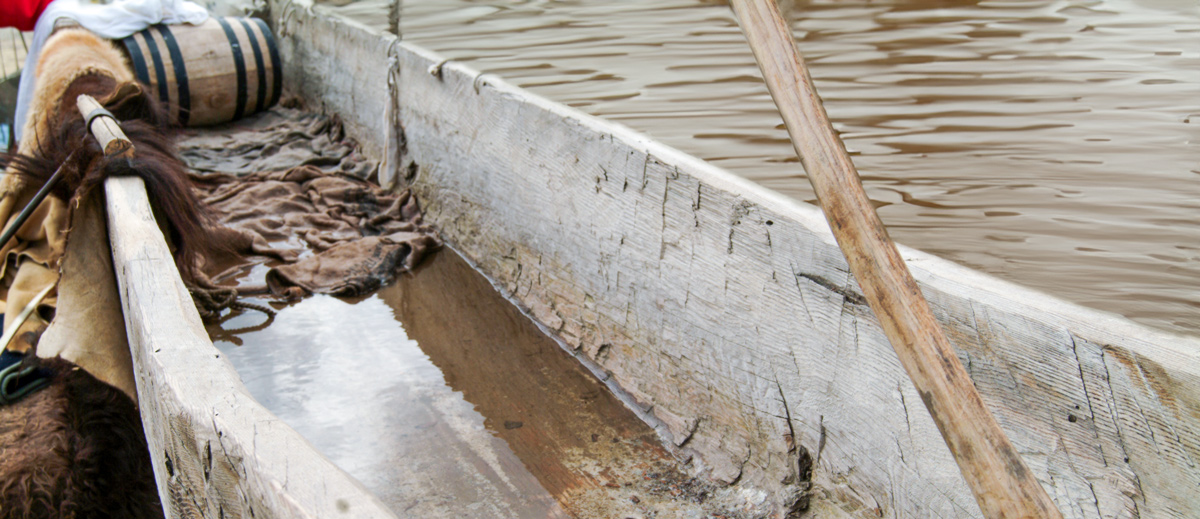After leaving the Knife River Villages, a leaky dugout canoe fills with water wetting a wooden keg of gunpowder. Below present Garrison Dam in North Dakota, the boats struggle against a headwind and must stop. In the Weather Diary, the captains describe the birds observed during their stay at Fort Mandan.
A Leaking Canoe
by Yellowstone Public Radio[1]Originally aired weekdays by Yellowstone Public Radio during the Bicentennial observance of 2003-2006. Narrated by Hal Hansen. Scripts by Whit Hansen and Ed Jacobson. Produced by Leni Holliman. © … Continue reading
Leaky Canoe
at 12 Oclock they came up and informed me that one of the small canoes was behind in distress. Capt Clark returned foud she had filled with water and all her loading wet. we lost half a bag of bisquit, and about thirty pounds of powder by this accedent; the powder we regard as a serious loss, but we spread it to dry immediately and hope we shall still be enabled to restore the greater part of it.
—Meriwether Lewis
Black Cat’s Goodbyes
the wind blew hard against us from the N. W. we therefore traveled very slowly. I walked on shore, and visited the black Cat [Posecopsahe], took leave of him after smoking a pipe as is their custom,
—Meriwether Lewis
Birds of Fort Mandan
the only birds that I obseved during the winter at Fort Mandan was the Missouri Magpie, a bird of the Corvus genus, the raven in immence numbers, the small woodpecker or sapsucker as they are sometimes called, the beautifull eagle, or calumet bird, so called from the circumstance of the natives decorating their pipe-stems with it’s plumage and the Prarie Hen or grouse [Sharp-tailed Grouse].—
—Lewis and Clark, Weather Diary
No Camp Followers Allowed
the Mandan man came up after we had encamped and brought with him a woman who was extreemly solicitous to accompany one of the men of our party, this however we positively refused to permit.
—Meriwether Lewis
Weather Diary
State of Thermometer at rise
Weather Wind at rise
State of Thermometer at 4 P.M. Weather Wind at 4 P.M. State of the River 19 [above 0] fair N. W. 56 [above 0] fair N. W. fallen 2 in. the Kildee, and large Hawk have returned. buds of the Elm swolen and appear red—
—William Clark and Meriwether Lewis[2]To assist the reader, the editor of this web page has omitted the date column, clarified the “State of the River” information, and spelled out some abbreviations.
Experience the Lewis and Clark Trail
The Lewis and Clark Trail Experience—our sister site at lewisandclark.travel—connects the world to people and places on the Lewis and Clark Trail.
Plan a trip related to April 8, 1805:

Notes
| ↑1 | Originally aired weekdays by Yellowstone Public Radio during the Bicentennial observance of 2003-2006. Narrated by Hal Hansen. Scripts by Whit Hansen and Ed Jacobson. Produced by Leni Holliman. © 2003 by Yellowstone Public Radio. |
|---|---|
| ↑2 | To assist the reader, the editor of this web page has omitted the date column, clarified the “State of the River” information, and spelled out some abbreviations. |

